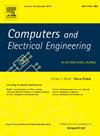A 17-level octuple boost inverter with low component and reduced inrush current
IF 4
3区 计算机科学
Q1 COMPUTER SCIENCE, HARDWARE & ARCHITECTURE
引用次数: 0
Abstract
This paper proposes a 17-level switched-capacitor-based inverter structure to reduce circuit components, limit inrush current, and provide an eightfold voltage-boosting capability. The proposed 17-level inverter comprises eleven switches, four capacitors, and three diodes. The distinct advantages of the proposed structure include the requirement for fewer components, inrush current limiting capability, eight-times voltage boosting, and a reduced number of components with a maximum blocking voltage (MBV) applied to only two switches. The circuit of the proposed structure includes a series-parallel unit (SPSC), two level-doubler (LD) units, and two half-bridge (HB) units for voltage polarity reversal. The circuit operation, charging and discharging states, the proposed modulation method, and the charging current analysis are presented. The capacitor voltages in the proposed structure are automatically balanced without needing auxiliary or pre-charging circuits. The proposed inverter is compared with other topologies from recent studies based on various parameters, demonstrating the superiority of the proposed design. The proposed 17-level structure simulation has been examined under steady-state and dynamic conditions. Ultimately, the experimental findings validate the theoretical assessments and simulation results.
一种17级八元升压逆变器,具有低分量和减少浪涌电流
本文提出了一种基于17电平开关电容的逆变器结构,以减少电路元件,限制浪涌电流,并提供8倍的电压提升能力。所提出的17电平逆变器包括11个开关、4个电容器和3个二极管。所提出的结构的明显优点包括需要更少的组件,浪涌电流限制能力,8倍电压升压,以及仅应用于两个开关的最大阻塞电压(MBV)的组件数量减少。所提出的结构电路包括一个串并联单元(SPSC),两个倍电平(LD)单元和两个用于电压极性反转的半桥(HB)单元。介绍了电路的工作原理、充放电状态、调制方法和充电电流分析。所述结构中的电容器电压自动平衡,无需辅助或预充电电路。基于各种参数,将所提出的逆变器与最近研究的其他拓扑进行了比较,证明了所提出设计的优越性。所提出的17级结构仿真在稳态和动态条件下进行了验证。最后,实验结果验证了理论评估和仿真结果。
本文章由计算机程序翻译,如有差异,请以英文原文为准。
求助全文
约1分钟内获得全文
求助全文
来源期刊

Computers & Electrical Engineering
工程技术-工程:电子与电气
CiteScore
9.20
自引率
7.00%
发文量
661
审稿时长
47 days
期刊介绍:
The impact of computers has nowhere been more revolutionary than in electrical engineering. The design, analysis, and operation of electrical and electronic systems are now dominated by computers, a transformation that has been motivated by the natural ease of interface between computers and electrical systems, and the promise of spectacular improvements in speed and efficiency.
Published since 1973, Computers & Electrical Engineering provides rapid publication of topical research into the integration of computer technology and computational techniques with electrical and electronic systems. The journal publishes papers featuring novel implementations of computers and computational techniques in areas like signal and image processing, high-performance computing, parallel processing, and communications. Special attention will be paid to papers describing innovative architectures, algorithms, and software tools.
 求助内容:
求助内容: 应助结果提醒方式:
应助结果提醒方式:


